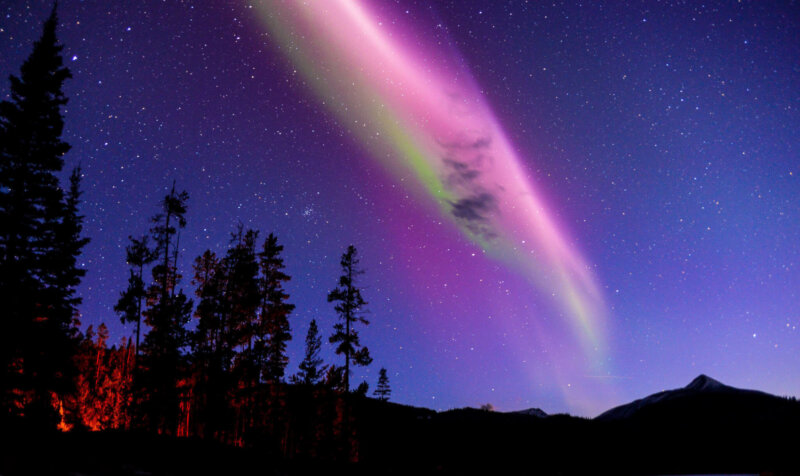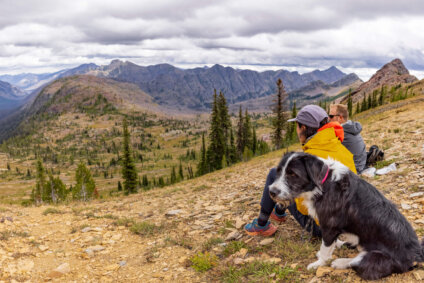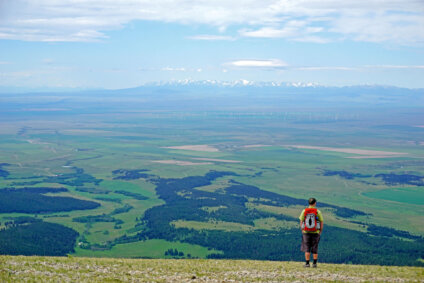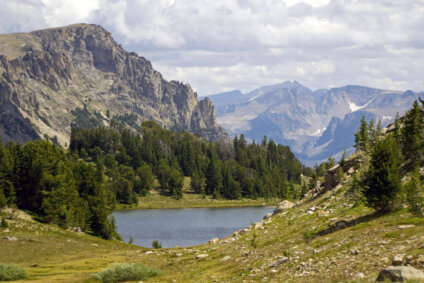How to View the Northern Lights in Montana
Enjoy the aurora borealis from Dark Sky Destinations across the state

On the winter solstice, the Earth’s pole is at its maximum tilt away from the Sun, and the Sun travels its shortest path of the year through the sky. As a result, the winter solstice is both the shortest day and the longest night of the year. It also happens to be the official beginning of winter. The winter solstice is celebrated around the world as a period of rebirth and renewal. It’s also a wonderful time to view the northern lights (but not the only time to catch this spectacular light show).
The aurora borealis, or dawn of the north, can be seen in the northern hemisphere the closer that you are to the pole. The northern lights can be visible across much of Montana thanks to a lucky combination of large areas of undeveloped public lands, small cities, and dark skies.
Ryan Hannahoe, executive director at the Montana Learning Center, explains that the auroras occur when charged particles or ions from the Sun enter the Earth’s magnetic field and then get concentrated near the poles. These particles emit light as they interact with gasses in the Earth’s atmosphere – like nitrogen and oxygen. The gasses determine the color of the northern lights. For example, blue and purple light with nitrogen and green and red light with oxygen.
If you’d like to view the northern lights, first check the current aurora oval or the Kp index. If the green oval extends over Montana, or if the Kp index is higher than 4, then you’ll likely be able to see aurora that night. (Aurora also happens during the day, but they’re not visible to the naked eye.) The best viewing conditions are in the winter when the nights are longer, preferably as close to a new moon as possible. Get away from city lights and go as far north as possible. The best viewing site in the state is Glacier National Park, but here’s a list of other public lands with dark skies.
Montana Dark Sky Destinations
With the right conditions, you can view the northern lights from most areas of the state, but these public lands have the darkest skies in the state. You can view an interactive light pollution map here.
- Ackley Lake State Park
- Bannack State Park
- Beaverhead Rock State Park
- Bob Marshall Wilderness
- Fish Creek State Park
- Flathead National Forest
- Glacier National Park
- Helena-Lewis and Clark National Forest
- Hell Creek Recreational Area
- Logan State Park
- Medicine Rocks State Park
- Painted Rocks State Park
- Russell National Wildlife Refuge
- Thompson Chain-of-Lakes State Park
- Upper Missouri River Breaks National Monument
Explore some Dark Sky Destination campground recommendations from the International Dark Sky Association on their website.
Aurora activity peaks every 11 years as the Sun cycles through activity levels. Solar activity is currently on an upswing, and 2023 is considered a great year for viewing the aurora borealis. Solar activity is expected to increase now through 2026, and with it the northern lights will grow increasingly impressive. Another reason to turn this into an annual solstice tradition.
Count Down to Winter Solstice
We’re counting down to the winter solstice with daily activity recommendations from our knowledgeable staff. Winter is a great time to celebrate and experience public lands. Do both with our Winter Solstice Advent Calendar!

Stay Connected
"(Required)" indicates required fields


